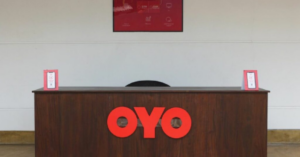Over the past year, the world has completely turned on its head owing to the COVID-19 pandemic. There came a new world order and businesses were scrambling to adapt to it and find innovative ways to maintain efficiency despite having to shift to remote work almost overnight.
As they now gradually regain their footing, remote work has become the norm, in what seems like the largest remote working project ever implemented by mankind.
Amidst the mayhem, there are very few industries that managed to thrive without falling prey to the ramifications of the new normal – the SaaS (Software as a Service) industry. In fact, with video communication becoming the base for businesses across verticals to function seamlessly, we simply cannot overlook the importance of SaaS, its increased adoption in the video communication industry, and the benefits it offers. Let’s take a look.
Going digital: the evolution
For the first time in the history of mankind, business conversations that previously happened in-person are now becoming primarily digital. This presents a golden opportunity for companies leveraging SaaS to utilise this treasure trove of data being generated from these conversations directly to improve the video conferencing experience.
Today, video call is to businesses what websites were 20 years ago. A few years down the lane, video-based communication will become as common as websites – every business will leverage it, thereby making it ubiquitous.
Take the example of the call center segment. Technology has completely revolutionised it, making it more efficient and enabling a wider reach. This is exactly what video communication is doing for businesses across the world today. Renowned Austrian management consultant, educator, and author, Peter Drucker once said, “If it cannot be measured, then it cannot be managed.” The same is the case with business communication.
With SaaS-based video communication, businesses can measure every aspect using the vast amounts of data generated to improve the video communication experience. This eliminates the subjectivity, and the ‘gut feeling’ part of it to make results more concrete, thereby enabling enhanced efficiency.
The adoption
It is common knowledge that technology has evolved leaps and bounds over the past few years, and the pandemic has merely accelerated its adoption amongst businesses. Customers as well as businesses are no longer constrained by geographical boundaries.
For instance, a patient in a Tier III city can consult one of the best doctors from Mumbai, and a student sitting in Boston, Massachusetts, can learn from a professor in Kanpur. This is possible only due to video communication evolving as an industry.
Moreover, today’s customers expect businesses to be available instantly rather than engaging in tedious and lengthy conversations over emails. As a SaaS solution, video communication facilitates adaptability as it can be deployed and managed from any location. With businesses now becoming ‘digital first’, SaaS video-based communication is coming to the forefront of business conversations.
Opting for a robust solution
This is perhaps the trickiest part for businesses, especially those that do not have the required tech expertise. Given its rapid evolution, one needs to consider SaaS tools that are available on a pay-as-you-go model rather than locking their money on subscription-based services or account-based pricing.
Businesses or even individuals can choose an option that allows them the flexibility of customising the interface, and the whole video communication experience. For instance, even small things such as being able to add your logo to a video call can create a sizeable impact on customers.
It is also important to opt for a solution that doesn’t burden your tech or product team for weeks or months for integration. There are options available in the market where integration can be done in a matter of days. Choose low code integrations that can be utilised by light API or SDK integrations or that can be embedded anywhere.
Businesses must bear in mind that the management bandwidth is one of the most critical aspects and must be conserved by choosing a provider that is cost-efficient and isn’t time-consuming.
SaaS players who support open standards are ideal options since they receive better support as compared to those using proprietary standards. Although video communication by itself doesn’t solve the entire puzzle, businesses can look for options where there are built-in integrations and packaged tools such as scheduling, email or WhatsApp notifications, recordings, calendar integrations, transcripts, customisable landing pages, and insights from all the data gathered.
Final word
Indisputably, video communication is the most sustainable form of communication as it doesn’t contribute to the carbon footprint and people/businesses can connect at any given time, irrespective of geographical constraints.
Democratising sectors such as education, healthcare, Human Resources, etc., shows that the adoption of SaaS solutions is more cost-effective, quicker, and more scalable in the long run. Given the current scenario, it’s safe to say that the future of work rests heavily on SaaS solutions, and businesses must adopt a comprehensive and robust provider to sustain in a remote working world.
(Disclaimer: The views and opinions expressed in this article are those of the author and do not necessarily reflect the views of YS.)









![Read more about the article [Startup Bharat] How Enthu.ai is helping call centres monitor, evaluate, and coach agents better](https://blog.digitalsevaa.com/wp-content/uploads/2021/08/SB-1629195061545-300x150.png)
